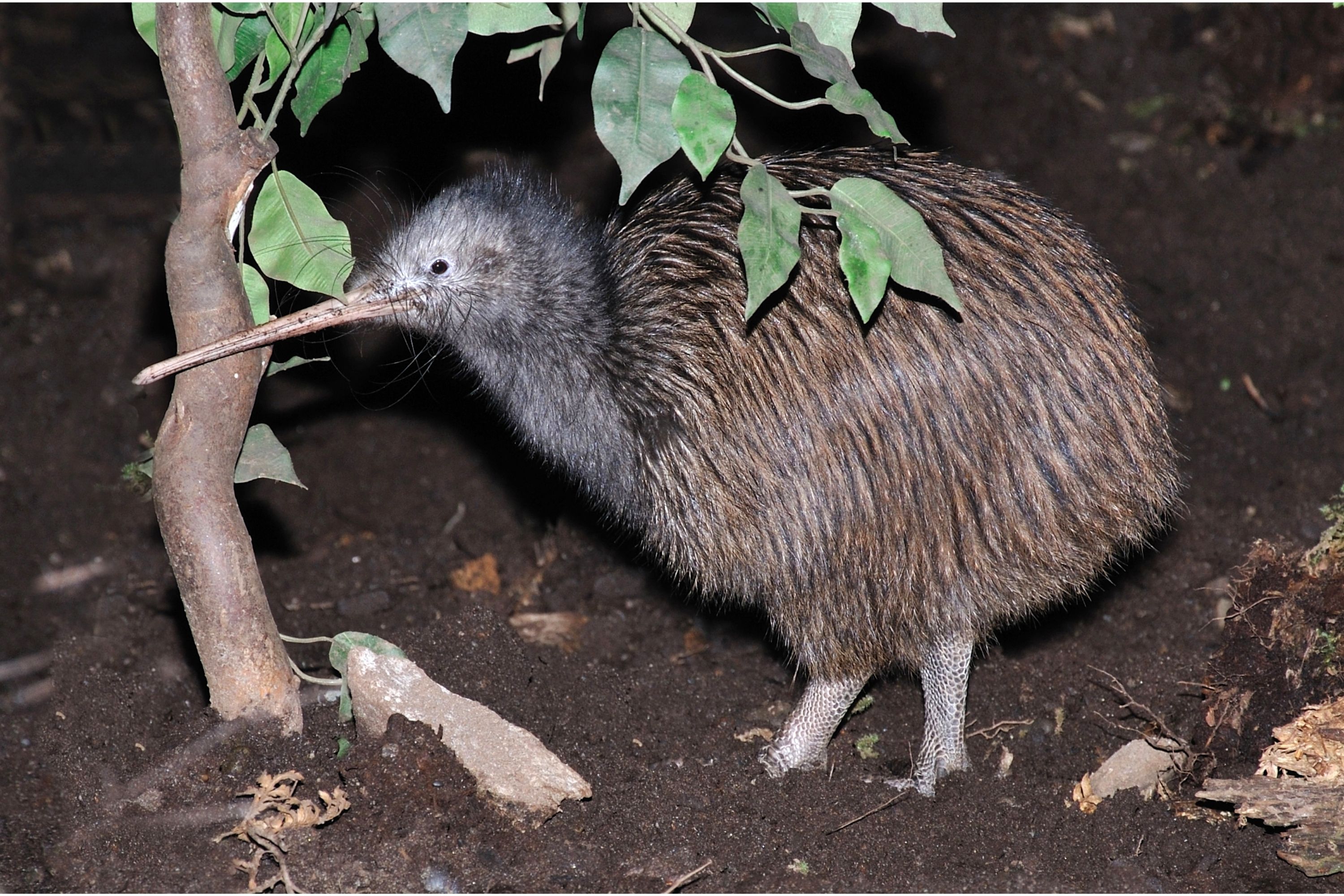Southern brown kiwi
(Apteryx australis)

Description
The southern brown kiwi, tokoeka, or common kiwi (Apteryx australis) is a species of kiwi from South Island, New Zealand. Until 2000 it was considered conspecific with the North Island brown kiwi, and still is by some authorities. It has no preen gland, and its feathers have no aftershafts and no barbules. There are large vibrissae around its gape, and it has no tail, only a pygostyle. It has a length of 45 to 55 cm (18–22 in) and the female weighs 2.1 to 3.9 kg (4.6–8.6 lb) and the male weighs 1.6 to 2.8 kg (3.5–6.2 lb). Its bill is long and slender with a slight down-curve. Like other kiwis it is nocturnal. The colour of its plumage is rufous with some streaking. Southern brown kiwi communicate vocally to aid in defending their territory. They will also sing duets with each other, with the male shrill "kee-wee" or "kee-kee" and the females hoarse " kurr kurr". Males are more vocal and they both call in an upright position with their legs stretched out and their bill pointing up. The southern brown kiwi has a long slender bill with lateral nostrils at the tip, which helps give them their keen sense of smell. They utilise this, more than sight and sound, to forage in dirt for invertebrates, including earthworms, beetle larvae, snails, spiders, centipedes, and orthoptera. Its gizzard is weak, and underutilised due to the lack of plant matter. Its caeca are long and narrow and aid in digestion. The southern brown kiwi, like all kiwi, has two functioning ovaries, however only the left oviduct functions, allowing eggs from both ovaries to pass through. It is a monogamous species and once paired up, they will defend their territories with warning calls. The size of their territory is between 4.9 and 43 hectares (12 and 106 acres). Nests are made in burrows, or sheltered beneath thick vegetation. The female lays 1–2 eggs, typically just 1, which the male incubates for 90 days. After a few days the chick will exit the nest and feed on its own, although it may stay around parents for a year. When not incubating eggs, they roost alone in sheltered places at ground level. Southern brown kiwi live in the South Island and Stewart Island. On the mainland (South Island) they live in Fiordland and Westland. Their range is temperate and sub-tropical forests, grassland, and shrubland, the denser the better. They are widespread throughout Stewart Island where they also live on the sand dunes.
Taxonomic tree:







